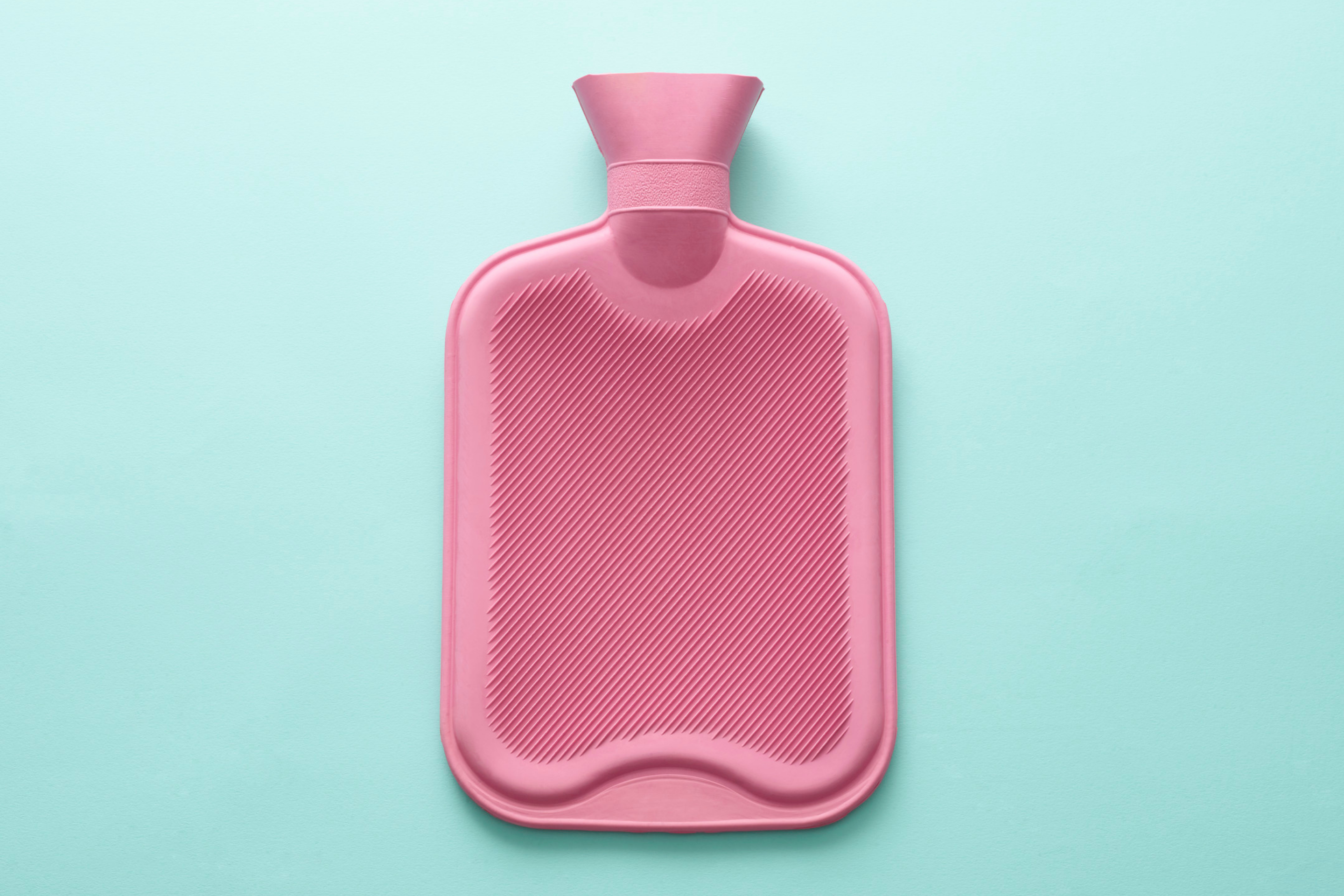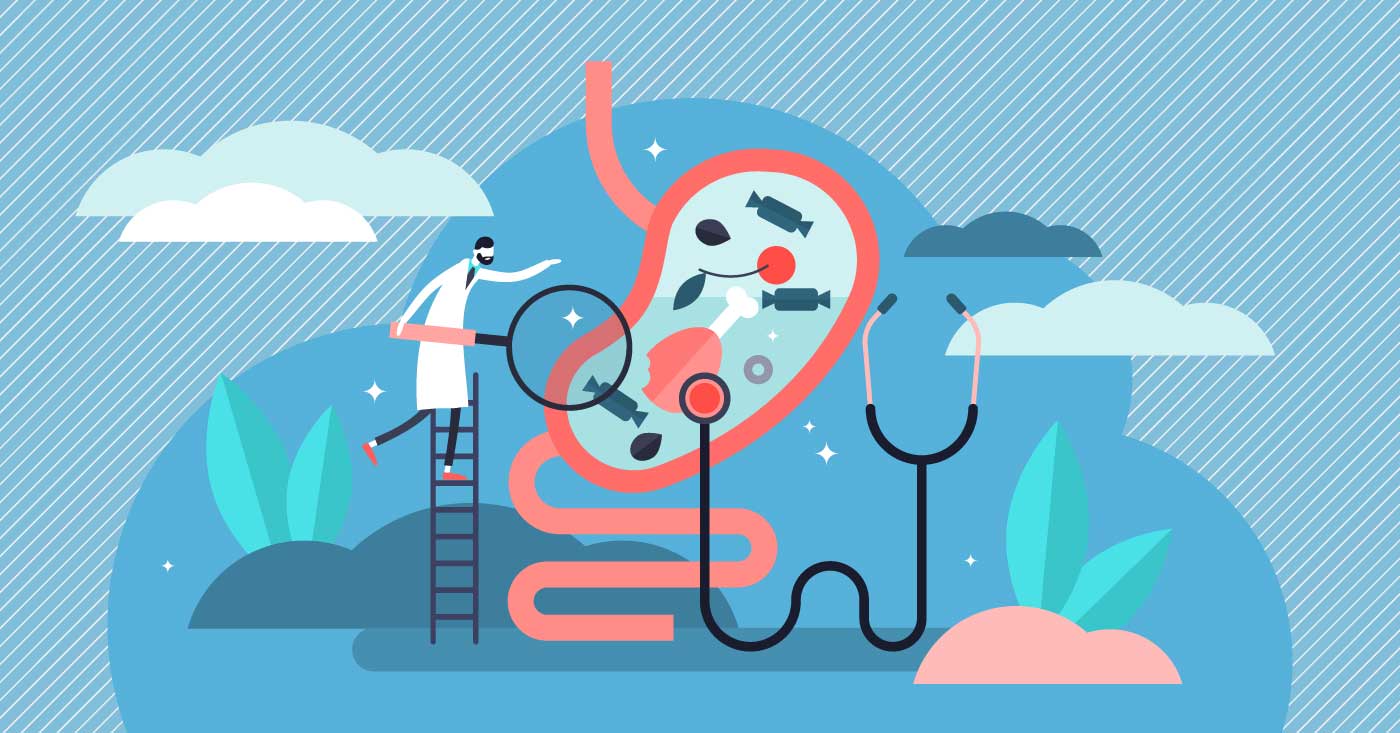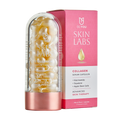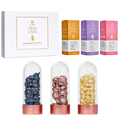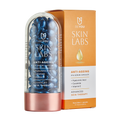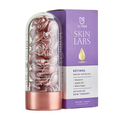Does Hand Sanitiser Really Work & Kill Germs by Brandi Danielle
Mar. 22, 2020
The below is a summary of this YouTube video - we thought you might find it useful!
"Does hand sanitiser really work?"
Does it really kill the germs? Do you really need to be wasting your money on it? What I first did was I just went on Google and I started researching, does hand sanitiser really work because I'm actually interested if it actually really does work. So I went to Amazon, started looking for what I needed. I got the Petri or Petri dishes. Not exactly sure how it said. So either way with the agar. It cost about $17 roughly. But that was what I had found on Google that you could use to test to... For the kids science projects, you could swab a counter top, you could swab anything and see what bacteria grows on it. So I ordered it and you have to kind of boil the agar, put it in your dishes, let it sit for so long before you can kind of start your process of that.
But kind of the first thing is, What really is hand sanitiser? When you look at the ingredients on the back, it's mostly alcohol. I've noticed most hand sanitisers, the alcohol level of those normally runs anywhere from 60 to 90%. I haven't seen a whole lot that are in the 90%, normally in the 60, 70% range. Hand sanitiser is just a liquid gel. You can get it in gel, you can get it in foam, you can get it in lotion. You can get the big ones, you can get travel size ones. You can get little cute things to hook them in. And of course, I was always sending my daughter to school with hand sanitiser, Hey, if you don't have time to wash your hands, at least use this. That's a good backup if you can't get to wash your hands.
So I see kids with them everywhere. People having them attached to their pocketbooks, their backpacks, just different stuff like that. So it's used to decrease infectious agents on your hands. But the thing about hand sanitiser is it does kill a variety of the microorganisms. It does not kill spores. And trust me, it was like going back to school, researching all of this science stuff. Researching all of the different germs, the types of bacteria, what they look like, the size, the shape, the colour, everything. Alcohol has been used as an antiseptic, at least as early as 1363. Sanitiser itself didn't become available into the late 1800s. I that's basically all I really want to talk about at the beginning of this video, it's just about the hand sanitiser. We're going to see, you're going to see here in a second.
Doesn't really work? I was surprised at what I found. I thought this was so cool. And if you have a kid that needs some type of science project or any project that they can do, that would be like this done. I highly recommend you go online. I will try to find where I ordered mine from and see if I can link it in the description, just in case any of you all want to do this, or do you want to use it as a project for your kids? I think it is a really amazing thing. It is extremely cool, but for now, we're just going to skip on over into the video and let's find out if the hand sanitiser really does work.
So I have just washed my hands and we are heading to the flea market. The flea market is my local one and I'm pretty sure they don't go through and clean all of the door handles. There's plenty of people sick, nothing really get sanitised there. So I figured this was a pretty good start to see how many germs I get on my hands when I'm down here so way, we will catch you back later, whenever we're at the house to see what germs we picked up today.
Okay, so now that I'm back from the flea market, I have picked up a bunch of stuff, touched a bunch of stuff. That place is not clean by any means. Nobody cleans the door handles or any of that regularly. So now that I have my agar into my Petri dishes, had to boil this and let it sit for an hour. What I'm going to do first is take the sanitised Q-tips that it comes with and I am going to swab my thumb because normally your thumb is what touches things the most when you go to grab and touch. So I'm going to take the Q-tip and just go over my thumb with it real good, swab it real, real good. Take the Petri dish and you are just supposed to run your Q-tip around like that, get it real good on there.
Now, put the cap back on. This has to sit in a warm, dark area for about three days and you watch it grow. So I definitely will be watching this grow. I also am going to be marking these with the date, when I did it, where I was at, what I touched. So before I do this one, I'm going to get my hand sanitiser. There are many different hand sanitisers that you can buy. Most of them that I have looked at have an alcohol level of 70%. Actually GermX has a lower alcohol level. It's only 62% and 68% for Bath & Body Works hand sanitisers. Actually the off brand that you can get at the Dollar Tree that is compared to Purell hand sanitiser has more alcohol in it. So what hand sanitiser that has more alcohol in it is going to kill more germs.
So that amount, plenty in there, going to rub it in really good, especially on my thumb, between my fingers. So now, I'm going to take the Q-tip on the hand that I've put this hand sanitiser on, do the same thing, rub the Q-tip real good. Open my next Petri dish. I'm just going to rub that all in the middle. So we will also label this one. We'll see how much germs this kills.
So on today's a little experiment, what I thought would be good to do is since so many kids go to school, that's normally where a lot of germs do kind of get brought home from kids being around other kids that are sick and stuff not really... A lot of kids don't wash their hands like they're supposed to. So today I'm going to swab her fingers, but I'm going to use this Bath & Body Works hand sanitiser. It's only 2% less in the alcohol level than the one that I used previously. So a lot of kids do carry these around. They get the little inserts, clip them to their backpack, their purses, themselves. The containers, and mark them at the bottom. Again, what we're going to do is take the sanitised Q-tips that it comes with. And let me make sure I'm grabbing the one that is without hand sanitiser. So just open it like I did last time.
Let me see them, Chloe. So thumb, I think is the best thing to rub on one because that's normally what finger touches the most stuff. So now just swab that around all in here, really good on there. Now put the dish back on top and what I also read for doing research on this was it is better to put them in some type of Ziploc baggy or cover them in Saran Wrap. Just to be safe that no more germs get inside. I'm going to get her to take this hand sanitiser, dime sized drop of the hand sanitiser, rub that in real good. Make sure you get your thumbs real good. I'm going to take another sanitary Q-tip and go over her thumb with the Q-tip again, I just rub it back and forth. Now we take the other one I've marked. I like to make sure I rub that in real good just making sure that we got the germs. So I'm just going to close that up again. Put it into a bag.
Today's date is February 11th. These are the samples that I took from going to the flea market on February 2nd. This one right here is before hand sanitiser. And then this one on this side is after hand sanitiser. So as you can see, there is quite a bit of bacteria and mould in the first one. And then in this one that is after the hand sanitiser, you do see less bacteria, but there is still a lot of mould, but there is less bacteria. So I would not say that that definitely killed 99.9% of germs period. But let's talk a little bit about the bacteria that is in this, because we're going to use this one. I'll talk about this one first, since there's not the same.
So I'm not going to touch this. I'm just going to grab a Q-tip. As you see up here in this corner, there is a little bit of a fluorescent yellow bacteria, and that's kind of spread out through there and this particular bacteria right here is called staphylococcus aureus. I know I'm probably not saying that right, but that bacteria is commonly found on your skin and hair as well as in noses and throats of people and animals. And they're even present in up to 25% of healthy people and are even more common among people with skin, eye, nose, or throat infection. And this right here can actually cause food poisoning, nausea, vomiting, diarrhea, loss of appetite, severe abdominal cramps and mild fever.
So that's not the best bacteria, but as you can see here, there is no fluorescent yellow bacteria in the one with hand sanitiser on the right. So it at least did kill that bacteria. Now, right here is some orangy, peachy kind of coloured bacteria. And there's some other little dots of that throughout the dish. And that is sarcina aurantiaca, which is an orange bacteria that is found on the skin and believe it or not, it is found in your large intestines and that bacteria can actually cause stomach issues, different types of colitis and some other things. But as you can see, if you look over here, the hand sanitiser did kill that bacteria. So as well, a good thing.
Now, this right here that you were seeing, that is all mould. Now we do see basically, I see the same amount of mould present in the one with hand sanitiser. So it didn't kill mould, but it at least did kill some more harmful bacteria. And then there's, this white bacteria not mould because as you can see, mould has a fuzzy appearance around it. The bacteria that I'm actually referring to, let's see, is this white bacteria out there, not any of the one with mould. So, that bacteria is actually staphylococcus epidermis. And it is a white glue like bacteria that it's part of our normal bodies. Everybody has that bacteria in you, but it causes nosocomial infections, foreign body infections.
Most of the people that are susceptible to that type of infection are people that have IVs in, ports in, newborns, elderly, catheters, and other artificial appliances are more likely to have problems with that bacteria. But if you do look in the one with the hand sanitiser, that bacteria was not killed. And believe it or not, if you guys do this at home, these jars do stink. They get to where they stink pretty badly. And these are from when I got my daughter, as soon as she got off the bus and had got out of school. So we can see right here, this is without hand sanitiser done on February 5th with hand sanitiser.
Okay. So looking at these, you definitely see a difference in the germs. There is still of course, mould in both. Not as much mould in that one is this one and it definitely did kill this yellow bacteria that is staphylococcus aureus. So killed that. That bacteria can actually also cause pneumonia and some other respiratory issues. So basically the same type of bacteria found at school and this was done with the Bath & Body Works hand sanitiser. And I noticed tons of kids have Bath & Body Works hand sanitisers attached to their backpacks, their pocketbooks, are just thrown down in there and they do use that a lot. So I can say... And you can see there's little itty bitty dots of the, I'm just going to say orange bacteria. It's the sarcina one that we just talked about, that's found on your skin and the large intestine, but that's quite a bit more of staphylococcus in this one. That is quite a large amount.
And as you see, we still see the glue like staphylococcus epidermis in this one as well. And if we go to the one with hand sanitiser used, there still is quite a bit of the orange, actually more of the orange bacteria in this one than there isn't this one. It kind of went from yellow to orange and there's couple of little other orange specks, mostly mould, but so hand sanitiser from Bath & Body Works. Yes. Does it kill some bacteria? Yes. Is it better than not killing any bacteria at all? Yes. But should they still wash their hands? Most definitely.
So as you can see, when I'm talking about cleaning these out, I have bleach and I'm just literally pouring some bleach into each dish. Do you see it changing colour and stuff, which is crazy. So bleach, I mean, even though that's not something to wash your hands in, we definitely know that bleach does work for sure because it has definitely changed the colour of the mould and I'm going to leave it sitting here just for a few minutes. Just let that soak dump, the bleach out. Dump bleach down your drain to clean it, put them in a baggie, tie the baggie up, seal it up and preferably take it to your outside trashcan.
Yeah. And that is all for this video. So as you can see, hand sanitiser does work, but do I recommend it over soap and water washing your hands? Absolutely, I don't. I don't recommend it over that. But if you were somewhere where you can't get soap and water to wash your hands quickly, or I've been in situations where I've went in a bathroom and you can't even put your butt on the toilet, it's so bad or you have to line it with so much stuff and you go up and the sinks are so disgusting. That's when I would recommend using the hand sanitiser. If you're out and about in your vehicle, I would still send it to school. I'm still going to send it to school with my daughter. I'm still going to tell her to use it. If you can't get to wash your hands, at least use the hand sanitiser because you do know that it is killing some of the germs, maybe not all of them, but it's better than nothing.
What are you waiting for? Click here to buy hand sanitiser for you, your workplace, your home, or even get some sent to your loved ones


